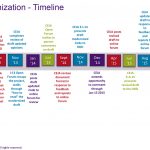The opinion also states, however, that this obligation is counterbalanced by the understanding that the physician workforce is a resource and not unlimited.
Institutions, therefore, must continually re-evaluate and balance the risks to providers against the need to be available to provide services in the future. Implicit is an obligation for healthcare systems to protect and support treating providers and to operate with a policy of communicating in a clear and transparent manner about these efforts in real time.
Protective Measures
The specific types and extent of measures taken to protect physicians are often determined by individual institutions. We believe such measures should carefully account for the following considerations to preserve the safety, and enhance the effectiveness, of our workforce:
The personal and family health status of deployed physicians, particularly those who have conditions that increase their own risk for adverse outcomes due to SARS-CoV-2 infection, should be given fair consideration. Specific examples associated with such increased risk include pregnancy, advanced age, cardiovascular or metabolic conditions, and the use of immunosuppressive drugs for existing comorbidities. A significant number of healthcare personnel with confirmed COVID-19 reported at least one underlying medical condition.6 Personal risk aside, many physicians also worry about transmitting infection to vulnerable family members.
Despite the demographically defined lower-risk category that trainees usually occupy, consideration should also be given to health status of trainees and their home contacts.
Structural features in redeployment schemes can incorporate safeguards to protect vulnerable physicians and those for whom risk is not well-defined. Some healthcare systems have tiered their redeployment plans based on such factors as age, comorbidities and proximity to internal medicine training. Deployments in these schemes are based on workforce needs, reserving frontline deployment of higher risk physicians only when absolutely necessary. High-risk providers are instead having their efforts directed to low-exposure support roles, including logistics, occupational health physician oversight and telemedicine to balance redeployment with preventing excess morbidity and mortality due to limited outpatient clinical operations within our own specialty.7
Refresher courses for general in-patient medical practice may be built into redeployment schemes in the form of online didactics or case-based materials. Redeployments often require providers to apply skills or knowledge that some may not have used for several years or that have not yet been tested or consolidated by experience. Sometimes, these assignments are offered as voluntary opportunities. In other cases, redeployment of trainees, including early graduation from medical school, leaves limited choices for these groups. Many retired physicians and healthcare workers also have offered to re-enter the workforce to address the increased demands during the pandemic.8


